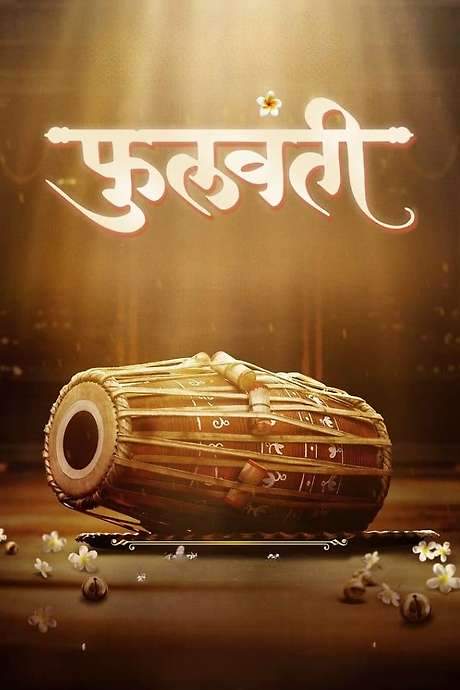
Phullwanti
A renowned court dancer finds herself at odds with societal perceptions, branded as impure simply for her profession. Defying these judgments, she embarks on a journey to challenge the prevailing views and demonstrate that true impurity lies not in her actions, but in the eyes of those who condemn her. She strives to prove that respect and dignity should not be denied based on occupation.
Warning: spoilers below!
Haven’t seen Phullwanti yet? This summary contains major spoilers. Bookmark the page, watch the movie, and come back for the full breakdown. If you're ready, scroll on and relive the story!
Phullwanti (2024) – Full Plot Summary & Ending Explained
Read the complete plot breakdown of Phullwanti (2024), including all key story events, major twists, and the ending explained in detail. Discover what really happened—and what it all means.
Phulwanti, a celebrated Lavani dancer renowned throughout India, receives an invitation to perform at a wedding. Initially hesitant, she ultimately agrees upon learning that the wedding will take place in Pune, not because of the performance itself but because she has long harbored a desire to visit Mastani Mahal. Her admiration for Mastani goes beyond her as a dancer; Mastani embodies qualities of courage, grace, and defiance that resonate deeply with Phulwanti, inspiring her to see this journey as both a personal pilgrimage and an opportunity to showcase her artistry.
During her stay in Pune, Phulwanti is also invited to perform during the auspicious festival of Vasant Panchami at the Peshwa Darbar, where she seeks the blessings of Goddess Saraswati before her dance. Her performance is a blend of devotion and art, touching the hearts of everyone present. Among the court members is Venkat Vishnu Shastri, a respected scholar known for his stern views and rigid beliefs. When he witnesses a Lavani dancer performing in a sacred space, he is visibly displeased and is prepared to leave, yet his attitude shifts when Phulwanti dedicates a beautiful tribute to the goddess. Her dance moves the audience, yet Shastri remains unmoved, making a condescending remark about the purity of Saraswati in the context of a dancer.
Stung but maintaining her dignity, Phulwanti responds with courage, challenging Shastri to a unique duel: he must learn to play the pakhwaj, an instrument he has little skill in, while she performs her dance. The stakes are high — the first to err three times will lose and become a slave to the other. The court is stunned by this unexpected challenge, yet Shastri accepts calmly. What follows is an unlikely contest: intellect versus art, pride versus humility.
In preparation for the challenge, Phulwanti undergoes rigorous training with some of the finest gurus from across the country, honing her already impressive dance skills. Shastry, meanwhile, faces a stern reprimand from his own guru for his disrespect and insult toward Phulwanti, warning him that he has not only dishonored a true artist but also disrespected the very essence of art itself. Despite this, Shastri diligently learns to master the pakhwaj, displaying humility and discipline as the confrontation approaches. As the day draws near, excitement and tension ripple through Pune.
Back at home, Shastri’s wife Laxmi quietly endures her worries and fears. She worries that if her husband loses, their family’s dignity could be tarnished, and if he wins, a talented woman like Phulwanti might become a servant in their home. Torn between loyalty and insecurity, she silently supports her husband with prayers and unwavering strength.
The day of the competition arrives, filling the court with anticipation. What unfolds is a spectacular display of skill and emotion — Phulwanti’s dance aligns perfectly with Shastri’s newfound mastery of the pakhwaj. Both push themselves to their limits, but ultimately, Phulwanti makes her third mistake. Shastri emerges victorious.
Yet, in a surprising turn, Phulwanti greets her loss with a gracious smile. She bows respectfully rather than showing despair. Later that night, she reveals that her loss was intentional and strategic, a demonstration of her confidence and dignity. Instead of taking her as a servant, Shastri takes her to the Peshwa Wada and liberates her, stating that his only aim was to free her from her unconscious ego. Moved to tears, Phulwanti confesses that she had fallen in love with him from the moment she saw him — not simply as a scholar, but as a man of “fierce integrity.”
Despite her feelings, she refuses to accept her freedom and choose love, emphasizing her principled stand. The next morning, she finds her house empty, with only a letter and her ghungroo (ankle bells). The letter clarifies that she is free to keep her art, pride, and home, and that Shastri, acknowledging her feelings, remains loyal to his wife.
Meanwhile, on the road leaving Pune, [Laxmi] gently asks her husband whether her place in his heart had ever been truly shaken. Shastri, caught off guard, begins to speak but is stopped by his wife, who softly remarks, “Don’t answer, because I know you won’t lie… and I’m not ready to hear the truth.” The heavy silence that follows symbolizes the complex emotions of love, duty, loyalty, and sacrifice — choices made quietly in the name of honor.
The film concludes with [Phulwanti] performing her ghungroo dances passionately, expressing her heart’s truth in the house of Vishnu Shastri, embodying her indomitable spirit and love for her art. Her journey reflects the timeless themes of resilience, love, and respect for one’s craft, resonating deeply with the ideals of courage and integrity.
Last Updated: August 19, 2025 at 05:14
Explore Movie Threads
Discover curated groups of movies connected by mood, themes, and story style. Browse collections built around emotion, atmosphere, and narrative focus to easily find films that match what you feel like watching right now.
Movies about defiant artists like Phullwanti
Stories of artists who challenge prejudice to reclaim their dignity and identity.If you liked Phullwanti's story of a dancer fighting prejudice, explore these movies featuring artists and performers who defy societal norms. These films share themes of artistic integrity, personal sacrifice, and the bittersweet journey to earn respect against all odds, offering similar heartfelt and dignified dramas.
Narrative Summary
Stories in this thread typically follow a talented individual whose art is misunderstood or condemned by society. The central conflict is an intellectual and emotional battle against prejudice, where the protagonist must use their talent and resilience not just to perform, but to prove their inherent worth. The journey is often internal, focusing on personal conviction over physical confrontation.
Why These Movies?
These movies are grouped together because they share a core theme of an artist's dignified defiance. They blend a heartfelt tone with a somber reflection on social judgment, creating a resonant experience centered on character strength and the cost of staying true to one's passion.
Movies with bittersweet victories like Phullwanti
Journeys where moral triumph is achieved, but personal desires are sacrificed.For viewers who appreciated the bittersweet ending of Phullwanti, this collection highlights films where characters secure a moral or principled victory but must let go of a deep personal longing. These movies capture the complex emotional landscape of winning a battle for respect while accepting a loss in love or personal happiness.
Narrative Summary
The narrative pattern involves a protagonist striving for a goal tied to justice, honor, or societal change. They succeed in their external mission, validating their core beliefs, but this success is inextricably linked to the loss of a cherished personal dream or relationship, resulting in an ending that feels both satisfying and sorrowful.
Why These Movies?
These films are united by their specific emotional payoff: a victory that is fundamentally bittersweet. They balance themes of resilience and courage with the melancholy of unrequited love or sacrifice, creating a reflective and emotionally resonant vibe that prioritizes character integrity over simple happy endings.
Unlock the Full Story of Phullwanti
Don't stop at just watching — explore Phullwanti in full detail. From the complete plot summary and scene-by-scene timeline to character breakdowns, thematic analysis, and a deep dive into the ending — every page helps you truly understand what Phullwanti is all about. Plus, discover what's next after the movie.
Phullwanti Timeline
Track the full timeline of Phullwanti with every major event arranged chronologically. Perfect for decoding non-linear storytelling, flashbacks, or parallel narratives with a clear scene-by-scene breakdown.

Characters, Settings & Themes in Phullwanti
Discover the characters, locations, and core themes that shape Phullwanti. Get insights into symbolic elements, setting significance, and deeper narrative meaning — ideal for thematic analysis and movie breakdowns.

Phullwanti Spoiler-Free Summary
Get a quick, spoiler-free overview of Phullwanti that covers the main plot points and key details without revealing any major twists or spoilers. Perfect for those who want to know what to expect before diving in.

More About Phullwanti
Visit What's After the Movie to explore more about Phullwanti: box office results, cast and crew info, production details, post-credit scenes, and external links — all in one place for movie fans and researchers.





























